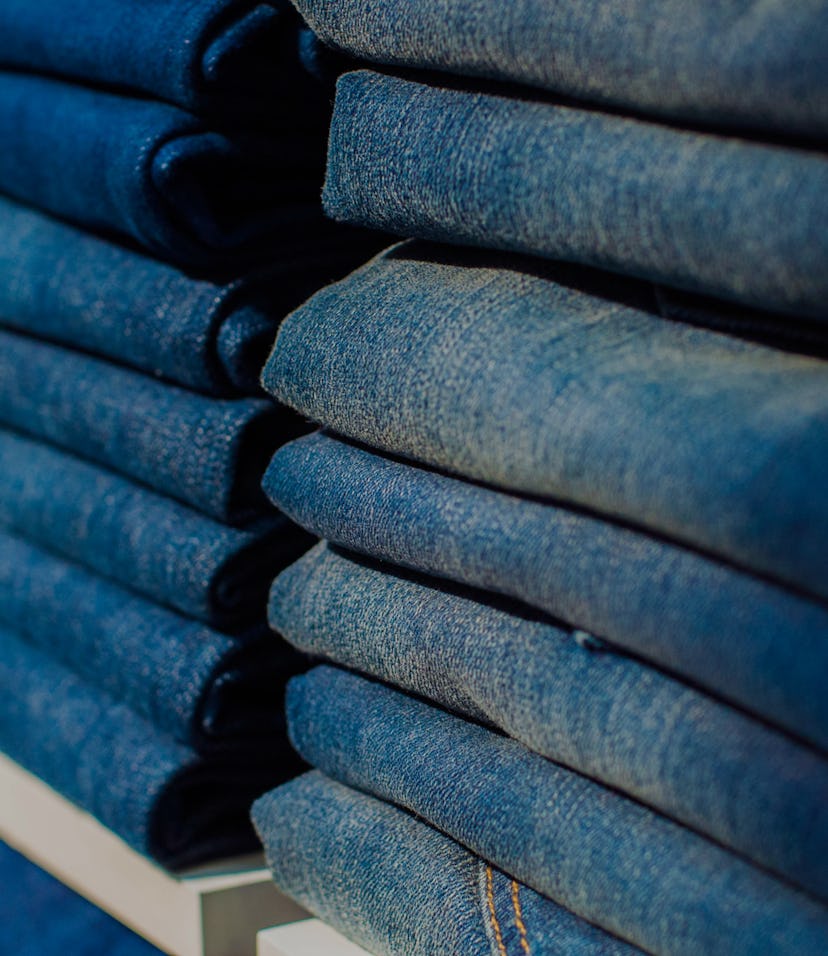Style
A scientific breakthrough could be huge for more sustainable fashion
Researchers have found a way to return cotton to fiber form.

Recycling clothing, which is still too rare of an occurrence, is still limited in its uses. Because cotton is rarely pure when applied to garments, it's difficult to separate from the fibers it's mixed with. As a result, recycled textiles are typically only used to produce low-quality products like cleaning rags instead of new clothing. But that's due to change with a scientific breakthrough coming out of Germany.
A new process to separate cotton from other intertwined fibers has been discovered by the Fraunhofer Institute for Applied Polymer Research, at the behest of Re:newcell. By breaking down mixed textiles into a pulp, researches were able to separate the cotton and begin a process to create viscose rayon fibers made of pure cellulose. This differs from the standard process of producing viscose rayon fibers, which involves a wood-based pulp. It also creates a more environmentally friendly fabric than petroleum-based polyester, which still dominates the industry.
How it's done — The Fraunhofer Institute used cellulose sheets made of recycled cotton provided by Re:newcell. These sheets were broken down into a pulp, which were then broken down into a solution using lye. From there, the solution was fed into spinnerets to spin it in an acidic bath to form a filament. Finally, the filament was washed, dried, and wound into a spool measuring several kilometers long. The end product exhibits the same quality as wood-based viscose rayon fibers, thus expanding the range of materials that can be used as a starting point.
"Cotton clothing is usually incinerated or it ends up in the landfill. Now it can be recycled several times to contribute to greater sustainability in fashion," André Lehmann, a researcher at Fraunhofer, said in a release. "By optimizing the separating processes and intensifying the filtration of foreign fibers in the spinning process, we will eventually be able to establish recycled natural cotton fiber as a serious alternative source of cellulose and base raw material."
If all of this is confusing, you're not alone. In short, researchers were able to create new fibers using recycled cotton instead of wood. This means textiles can be recycled several times over, and the process could eventually be applied to mass manufacturing.
Re:newcell has already worked with Levi's — Just last week, Levi's released two pairs of jeans consisting of 20 percent sustainably sourced viscose from Re:newcell. The process behind the viscose also involved recycled cotton, and it's unclear how this breakthrough differs. Either the announcement came after the new process was already applied for Levi's, or we're talking about something else altogether. Regardless, I'll trust the researchers when they say they've found a game-changer.
What still needs to be changed is how much clothing ends up in landfills. Only 15.2 percent of all textiles were recycled in 2017, according to the Environmental Protection Agency. And within the apparel and footwear space, that figure drops to 13.6 percent.